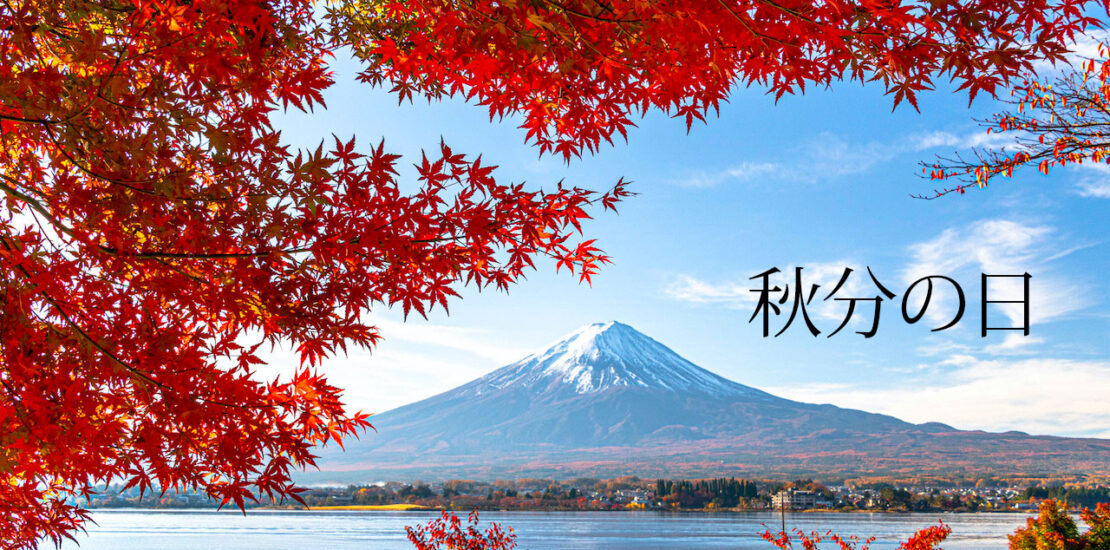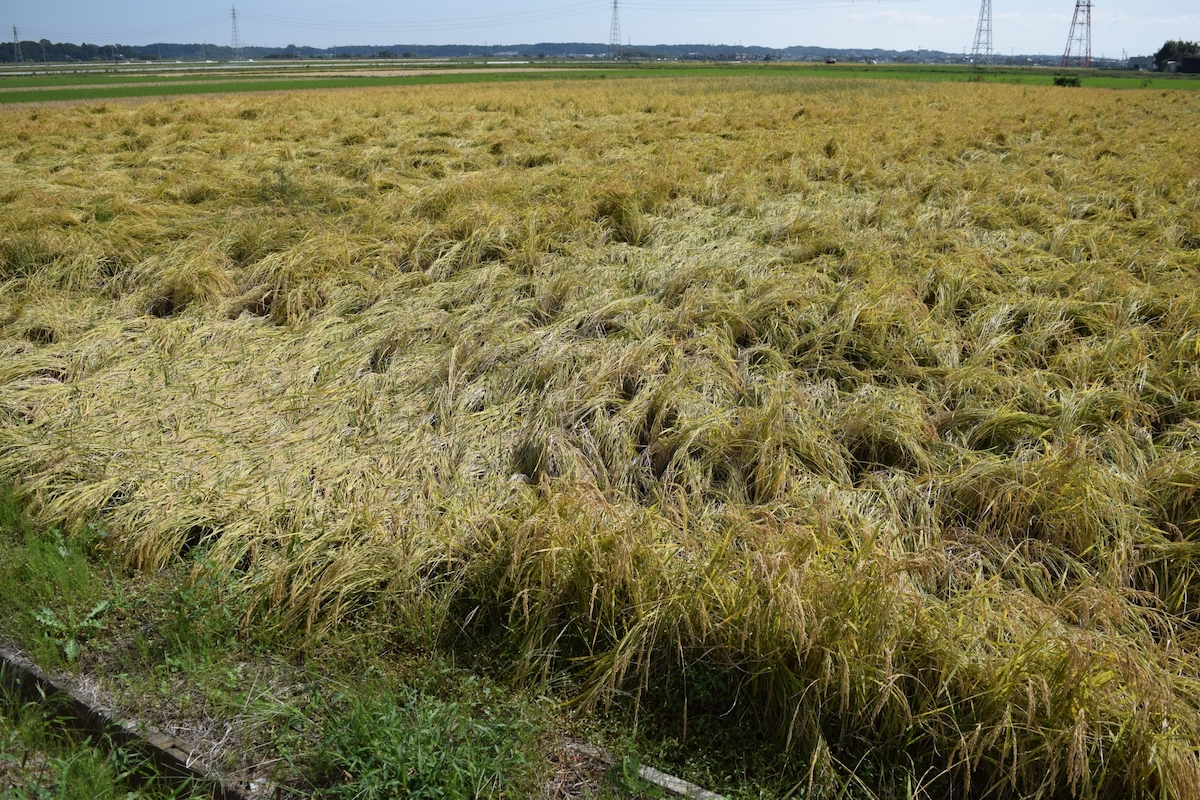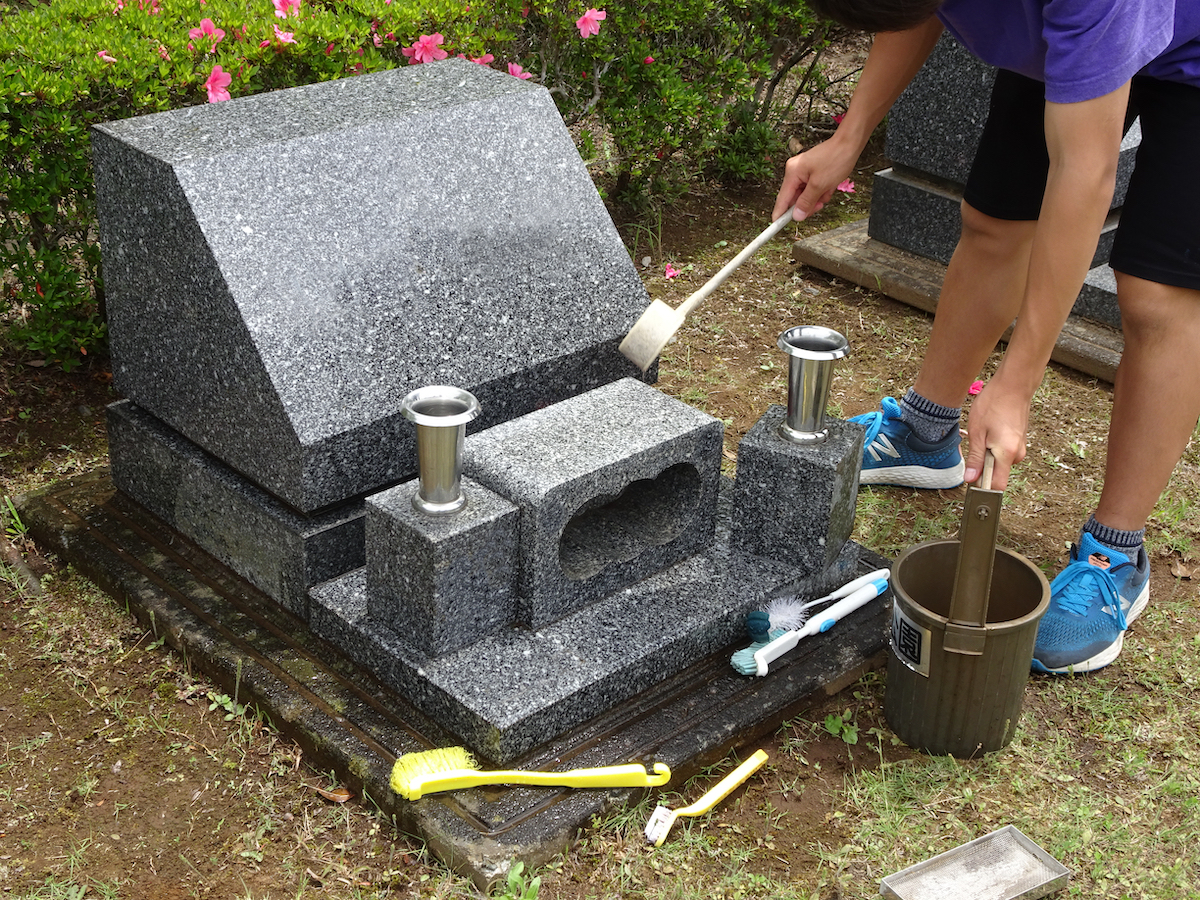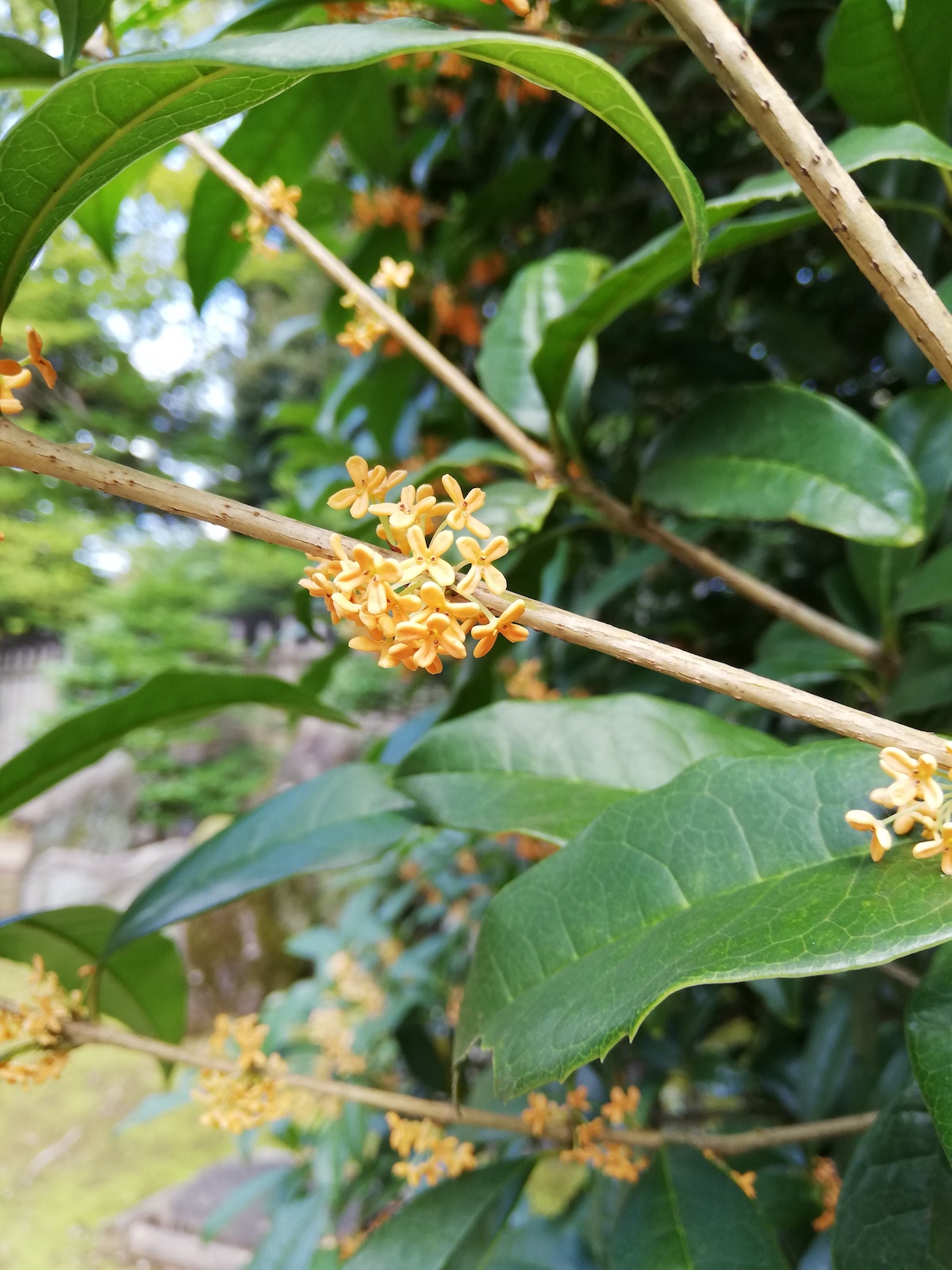They say, “Hot and cold, both last until Higan.” So say goodbye to summer and get ready for autumn!

Shūbun No Hi is Japan’s autumnal equinox, the day of the year on which the hours of daylight and the hours of darkness are equal. It is one of the 16 national holidays in Japan. Up until 1948, it was known as Shūki Kōrei Sai, the Imperial autumn festival to honor deceased ancestors.
This year, Shūbun No Hi falls on Thursday, September 23. Since it is based on the astronomical position of the sun, this date varies from year to year. The official date is determined and then declared by the National Astronomical Observatory of Japan on February 1 of the previous year.
The official stated purpose of Shūbun No Hi is:
祖先をうやまい、なくなった人々をしのぶ: To show reverence to one’s ancestors and to remember those who have passed away.

Shūbun No Hi and Higan
Shūbun No Hi is also called Higan No Chūnichi because it falls smack in the middle of Higan, a special week in the year for honoring one’s ancestors. Being the middle day of this important period reflects the Buddhist concept of balance, called nakadō 中道, or the “middle road.” According to Buddhist teaching, our lives ought to contain a mixture of both suffering and ease, not one or the other. This is reflected in shōjin ryōri 精進料理, Buddhist cuisine as well, which avoids using any seasonings that are too strong. With the sun rising due east and setting due west, Shūbun No Hi is supposedly the day in which the shores of the afterlife and the shores of this present life are the closest, making communication with those who have passed away possible.
If you are feeling a little bit of déjà vu, it’s probably because you are remembering the complementary holiday, Shunbun No Hi, or the spring equinox, which occurs in March. While Shūbun No Hi falls during autumn higan, Shūbun No Hi occurs during spring higan. Both higans are the turning point of the seasons, giving rise to the saying mentioned at the opening of this post:
暑さ寒さも彼岸まで: Hot and cold lasts until Higan
It also happens that the spring equinox is the time for planting and the autumnal equinox for harvesting, so that on Shunbun No Hi, people traditionally prayed for a good crop and on Shūbun No Hi, they gave thanks for the harvest.
Interestingly enough, Shūbun No Hi actually coincides with Shūbun, one of the 24 seasonal divisions that mark the traditional Japanese calendar 二十四節気. Each of the 24 divisions consist of about 15 days, have a special name, and describe specific changes in nature. Shūbun is the period from about September 22 to October 7, and it consists of three smaller divisions:
September 22 to 27 雷乃収声 かみなりすなわちこえをおさむ “Thunder Lowers Its Voice”
During this short period, summer thunderstorms quiet down, the weather turns crisp, and the sky is filled with autumn clouds.
September 28 to October 2 蟄虫坏戸 むしかくれてとをふさぐ “Hibernating Creatures Close Their Doors”
This is the time when the insects burrow away in the earth until springtime.
October 3 to October 7 水始涸 みずはじめてかる “The Paddy Water is First Drained”
Fall is harvest time, and over the course of these few days, farmers drain the rice paddies and bring in sheaves of golden rice.
For more about the seasons, check out Koyomi Seikatsu (Japanese).

Shūbun No Hi and autumn higan are Buddhist events, and religious families often take this time to clean and put fresh flowers on the family gravestones, clean the family altar, and set out offerings to their deceased relatives. This may include seasonal flowers or whatever food and drinks were their relatives favorites when they were on this earth. For non-religious families or those who are not Buddhist, it can be a time to give thanks for material blessings like food and to steep oneself in the beauties of the autumn season.
What To Eat
Japanese cuisine, whether the traditional diet or the trendy new macrobiotic diet, always makes use of seasonal ingredients, and during Shūbun season, there are plenty of good things to eat.
Right around this time, you might start seeing a well-proportioned little brown mushroom at the grocery store. Matsutake mushroom 松茸, the spicy little pine mushroom that Japanese love so much, is also known as kinoko no ōsama, king of the mushrooms. Cook it together with your rice in a rice cooker with Japanese seasonings to make hearty matsutake gohan, or if you aren’t into cooking, simply coat these little mushrooms with a tablespoon of cooking sake and toast for five minutes. Add soy sauce and mirin to taste, and if you’re feeling fancy, add a little sudachi citrus juice as a garnish.
Two other autumn foods are karin, or Chinese quince, and Pacific mackerel, both of which are highly nutritious, not to mention delicious! Here is a recipe for grilled mackerel by Just One Cookbook, one of my favorite Japanese cooking blogs.
Finally, ohagi is the go-to dessert of this season. If you haven’t tried it before, ohagi consists of sticky rice cake covered in sweetened azuki beans that have been mashed into a paste. The name of this delicacy comes from the flower, hagi 萩, which blooms in the autumn. Ohagi became a staple of Shūbun No Hi for a couple reasons. First, since ancient times in Japan, azuki beans have been said to keep you from catching colds and ward off bad influences. Second, during the Edo Period, sugar was very expensive and hard for the common people to come by, making ohagi a valuable sweet worthy of offering. You may have also tried bota mochi ぼた餅, which is offered and eaten during spring higan. It is virtually the same thing as ohagi, but instead of lumpy azuki paste, bota mochi calls for smooth. It’s said that bota mochi resembles the peony, which blooms in spring. You can find both of these at your local supermarket, wagashi shop, or even konbini!

In Japan, you will know that autumn is on its way when the cicadas quiet down. Also look for a spindly flower that blooms along the roadsides or often in cemetaries. This bright red, or sometimes white, flower growing straight and tall on a green stalk is called manjushage 曼珠沙華 or higanbana 彼岸花 and is symbolic of the season. Kinchakuda Park in Hidaka, Saitama Prefecture is famous for the sea of higanbana that bloom all at once. Another sign of autumn is the sweet, coconutty aroma of kinmokusei 金木犀, named for the golden orange color of its tiny flowers. This fragrant variety of olive tree blooms all over Tokyo, so if your sense of smell is keen enough to detect its aroma through your mask, you’ll know right away when you pass by it. Finally, during September and especially for the moon viewing festival called Otsukimi (September 21 this year), people love to decorate their homes with susuki ススキ, a pale, wheat-colored grass. You can pick it up at a flower shop, or you might find it growing in your side yard.
How about you? What is your favorite thing about autumn in Japan? Do you have any thanksgiving celebrations in your country?
Related Articles
Warning: Undefined array key "sfsi_threadsIcon_order" in /home/veremosglobal/tokyoroomfinder.com/public_html/blog/wp-content/plugins/ultimate-social-media-icons/libs/controllers/sfsi_frontpopUp.php on line 165
Warning: Undefined array key "sfsi_blueskyIcon_order" in /home/veremosglobal/tokyoroomfinder.com/public_html/blog/wp-content/plugins/ultimate-social-media-icons/libs/controllers/sfsi_frontpopUp.php on line 170
Warning: Undefined array key "sfsi_bluesky_display" in /home/veremosglobal/tokyoroomfinder.com/public_html/blog/wp-content/plugins/ultimate-social-media-icons/libs/controllers/sfsi_frontpopUp.php on line 266



